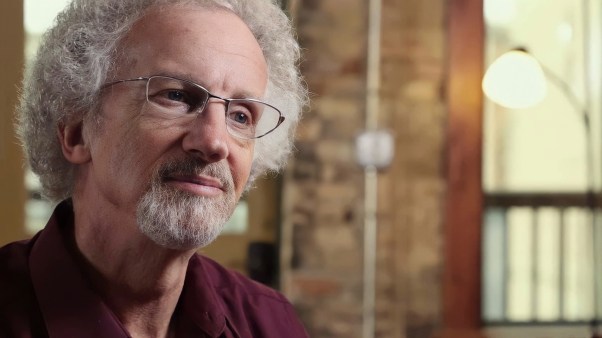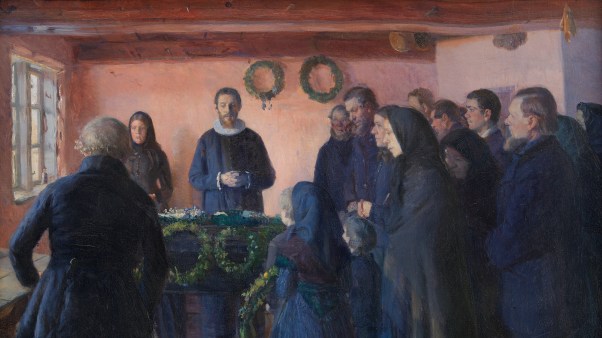Turns out, people want to hear what the Bible has to say.
I’ll admit I grew up in a church and denomination that emphasized the Bible—maybe too much.
I’ll explain.
We loved the Bible. We sang songs about it. We memorized it. We treated it like the fourth member of the Trinity. In fact, one failure of the denomination in which I was raised was that we loved the Bible so much, we sometimes overlooked the God who breathed it. Written words over living Word, every time.
Still, I’m grateful for a heritage that gave me an appreciation for the Scriptures. Because my generation was so marinated in the text, when I entered pastoral ministry, teaching the Bible exegetically wasn’t the pressing need. What we needed was spiritual wisdom—to learn and discern how to apply the ancient Scriptures to our modern lives. So pastors like me threw ourselves into “practical teaching.” Preachers I loved and learned from said things like, Practical teaching that moves people to action is one of the primary things God uses to grow our faith.
My teaching was still steeped in Scripture and theology, but I’ve done my best to be immensely practical, even when fellow staff members and congregants did not realize why a sermon on glorification might matter to their Monday morning. These sermons weren’t unbiblical sermons—they just started with life questions like finances, marriage, dating, healing, and the like, rather than a lectio continua approach to Romans.
But here’s the issue: Our emphasis on practicality may have been an overcorrection. I fear many pastors in my generation have driven the church into the ditch on the other side of the road. We’ve focused so intently on practical relevance that too few Christians can tell you who Melchizedek was, why the Mosaic covenant mattered, or what a mustard seed represents. They don’t know the overarching story of the Bible, the historical and narrative natures of different genres of text, or how the Levitical sacrificial system helps us make sense of why Jesus came and what he accomplished.
As Russell Moore chronicles in Losing Our Religion, too many believers know neither the story of the Bible nor the stories in the Bible. This leaves spiritual formation at the mercy of online hate, political tyrants, and amorphous spiritualism.
Recently, a church member told her friend that she was thinking of leaving our church. The reason? Not enough Bible. This puzzled me. We offer small group Bible studies and run classes on how to read the Scriptures. But attendance to these is modest.
Turns out, she did want more Bible, but she wasn’t looking for another commitment. She wanted deeper Bible teaching at the time and place she had already carved out: the weekend worship service.
She is not alone. My preacher friends and I hear this request constantly—hunger for studying the Bible for itself, even though our churches might already provide that in midweek classes.
Here’s a solution to consider: fall is the perfect time to integrate that study into Sunday.
The season of stability
Between Labor Day and Thanksgiving, people travel less and are more settled. Summer scatters us; it’s filled with weddings, beach trips, family reunions, and weekend getaways. December gets swallowed up by holiday chaos. But fall? Fall is the season of routine. Kids are back on school schedule. Adults are back to full workweeks. Youth sports and community events follow a predictable weekly rhythm. Most families are home more weekends than not.
That’s not just good for church attendance—it’s good for continuity in preaching. Long texts like Genesis take a while to work through. Meaty texts like Romans refuse to be rushed. Even if you break long texts into two series, there are few other stretches in the calendar year when you may get a relatively stable congregation for 8 or 12 weeks. This matters when having an active memory of what was preached last weekend informs understanding for this week. Memory builds on memory, insight on insight. And let’s be honest—fewer people catch up on our sermon podcast or YouTube feed than we might hope.
The “second new year”
Many people treat fall as a second new year. It is a time for reimagining our rhythms of life, which is particularly true for families readjusting to school rhythms and extracurricular commitments. Spiritually, they’re quietly wondering: How do I reconnect with God after the summer drift? Where did my sense of purpose go?
Textual preaching answers that hunger with groundedness. It says, Let’s walk together through something solid. It invites people into a rhythm of attentiveness. A well-structured series through Scripture doesn’t just teach content—it shapes lives. It offers people a chance to build (or rebuild) a spiritual habit. When church becomes a place where the Bible is opened, explored, and applied week by week, it anchors the larger reset people are craving.
The surprising appetite
Younger Christians in particular are craving more Bible teaching. This is the opposite of the problem we faced when I began ministry nearly three decades ago. David Kinnaman’s research confirms that younger generations are craving deeper biblical engagement. Barna’s recent studies show that in-depth Scripture teaching ranks among the top reasons for choosing and attending a church regularly. At the same time, young people don’t feel confident in their own knowledge of the Bible. This is where the fall series becomes more than a strategy; it’s a pastoral response.
In years past, during the waning days of Christendom, many of us labored to make the church and the Bible “relevant” and “engaging.” Now our task is to reveal how God’s story makes life meaningful. People want the Word—they just don’t always know how to access it.
Preaching textually also models how to read Scripture well. It teaches not only what the Bible says, but how to live inside its story. Each fall we have an opportunity to demystify difficult passages and contextualize familiar ones. It builds biblical literacy without making people feel shamed or overwhelmed.
The gift of discomfort
Long teaching series also allow pastors to model humility before the Word. They make us step outside our wheelhouse. Rather than choosing topics that feel “on brand” or comfortable, preaching from the text means sometimes wrestling with difficult doctrines, complicated histories, or challenging commands. This, too, forms our people. It shows the congregation that Scripture is not a tool we wield—it’s a voice we sit under.
Don’t misunderstand; I do believe topical preaching has its place. All preaching should be relevant and practical—even engaging to some degree. But the Spirit seems to be prompting Christians to desire more textual focus. And the fall—more stable than summer’s travels, winter’s frenzy, and spring’s sprint—offers the best season to feed that desire.
In a world of soundbites and infinite scrolling, preaching that lingers with the text is a countercultural witness. In a season when people form new patterns, it’s a time to root them in something eternal. And in a church that often struggles to hold attention, it’s a moment to recover the possibility of awe.
So this fall, open the Book. Stay with it. Let it speak at its own pace and in its own voice. Trust that in the Word, preached faithfully and patiently, God will meet his people.
After all, it turns out they’re hungrier than we thought.
Sean Palmer is the teaching pastor at Ecclesia Houston, a writer, a speaking coach, and the author of Speaking by the Numbers.









